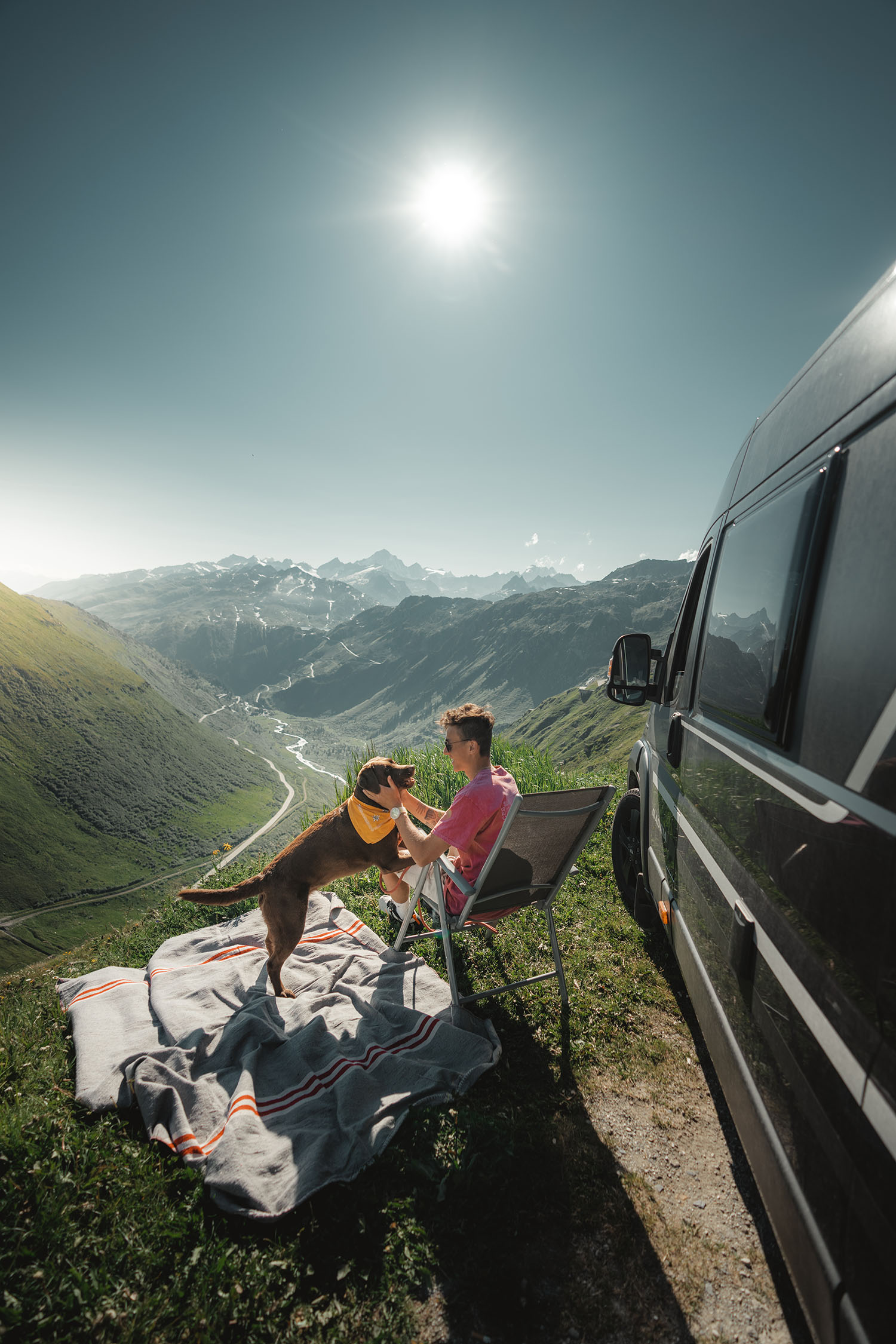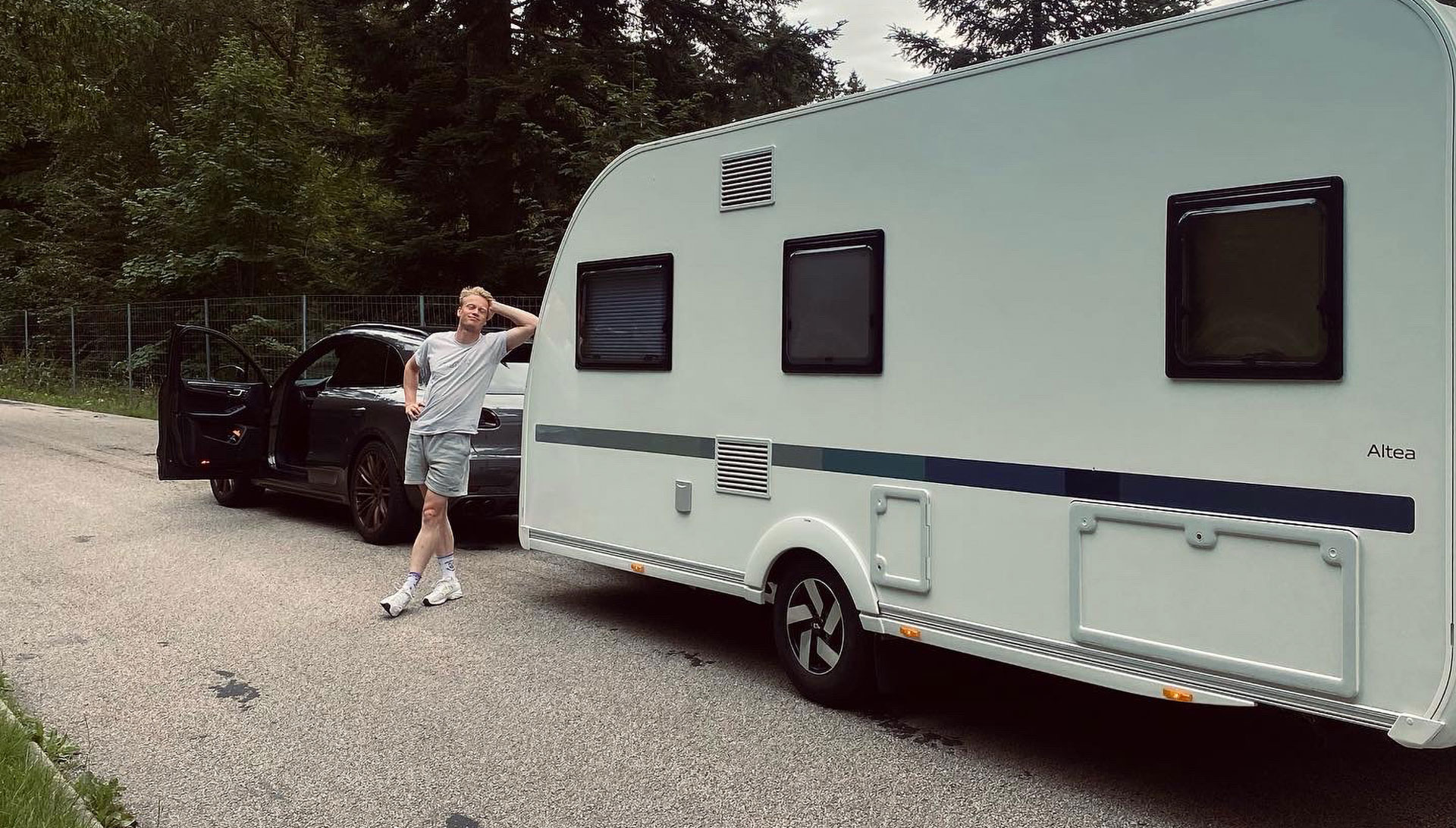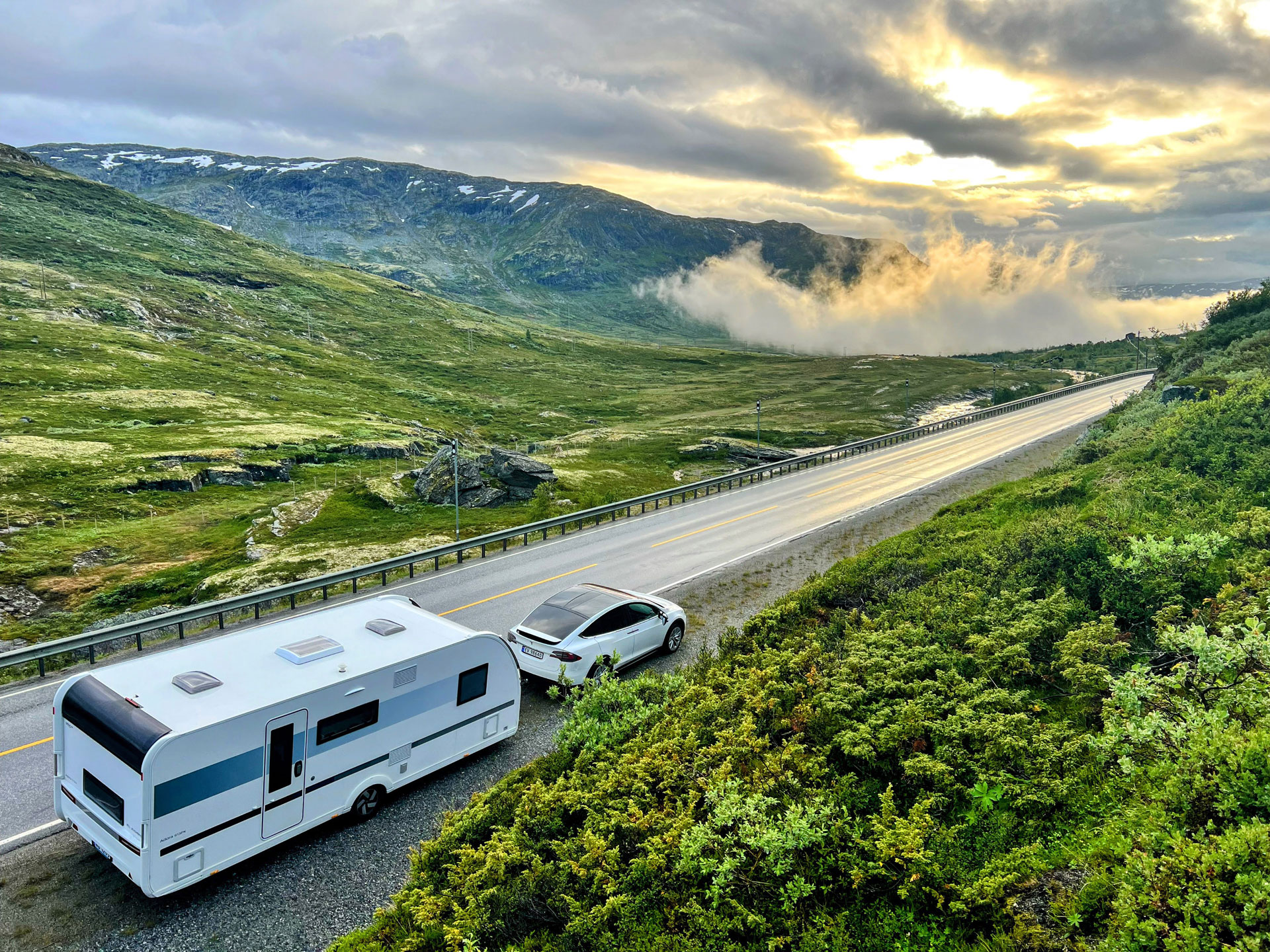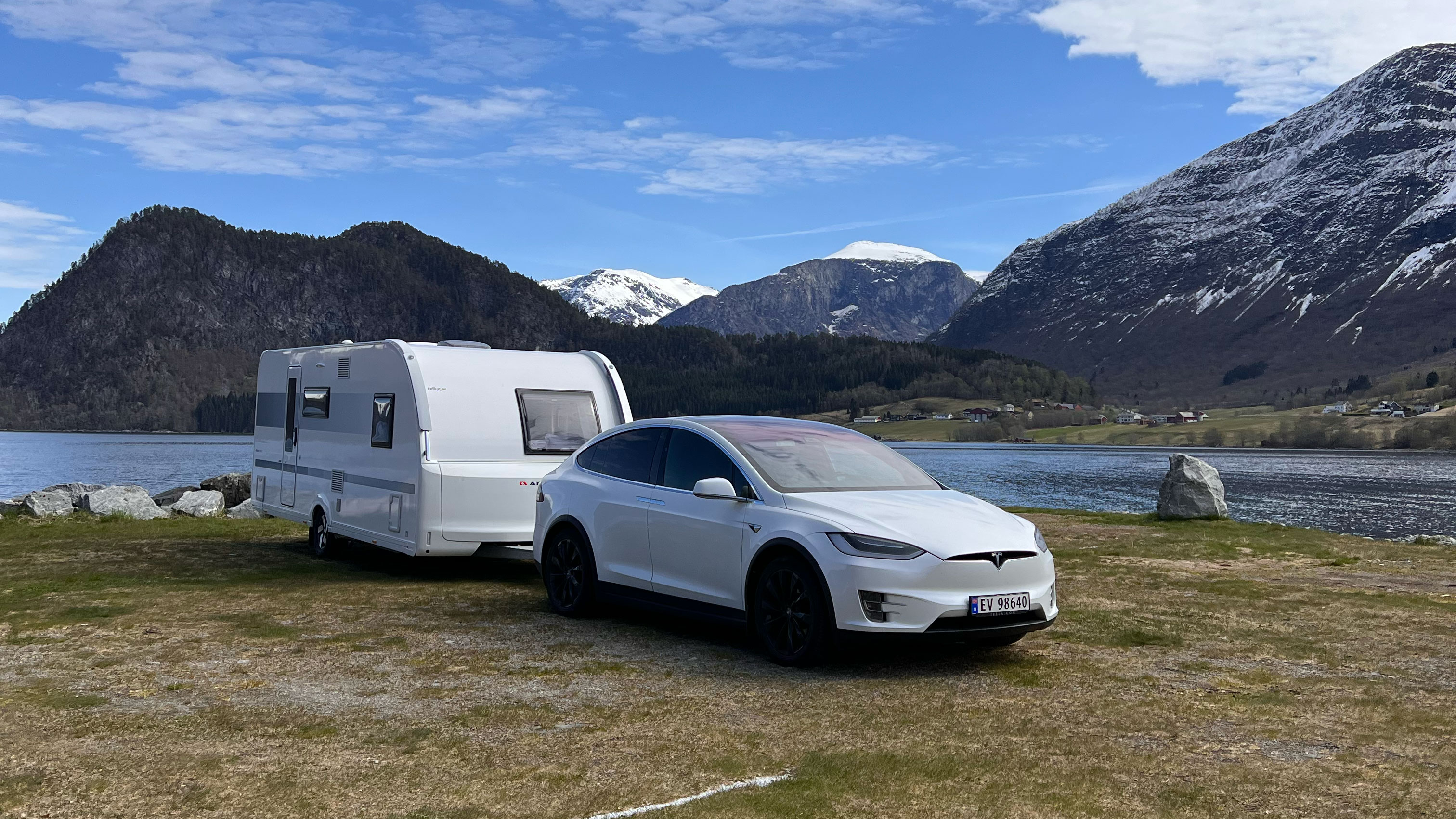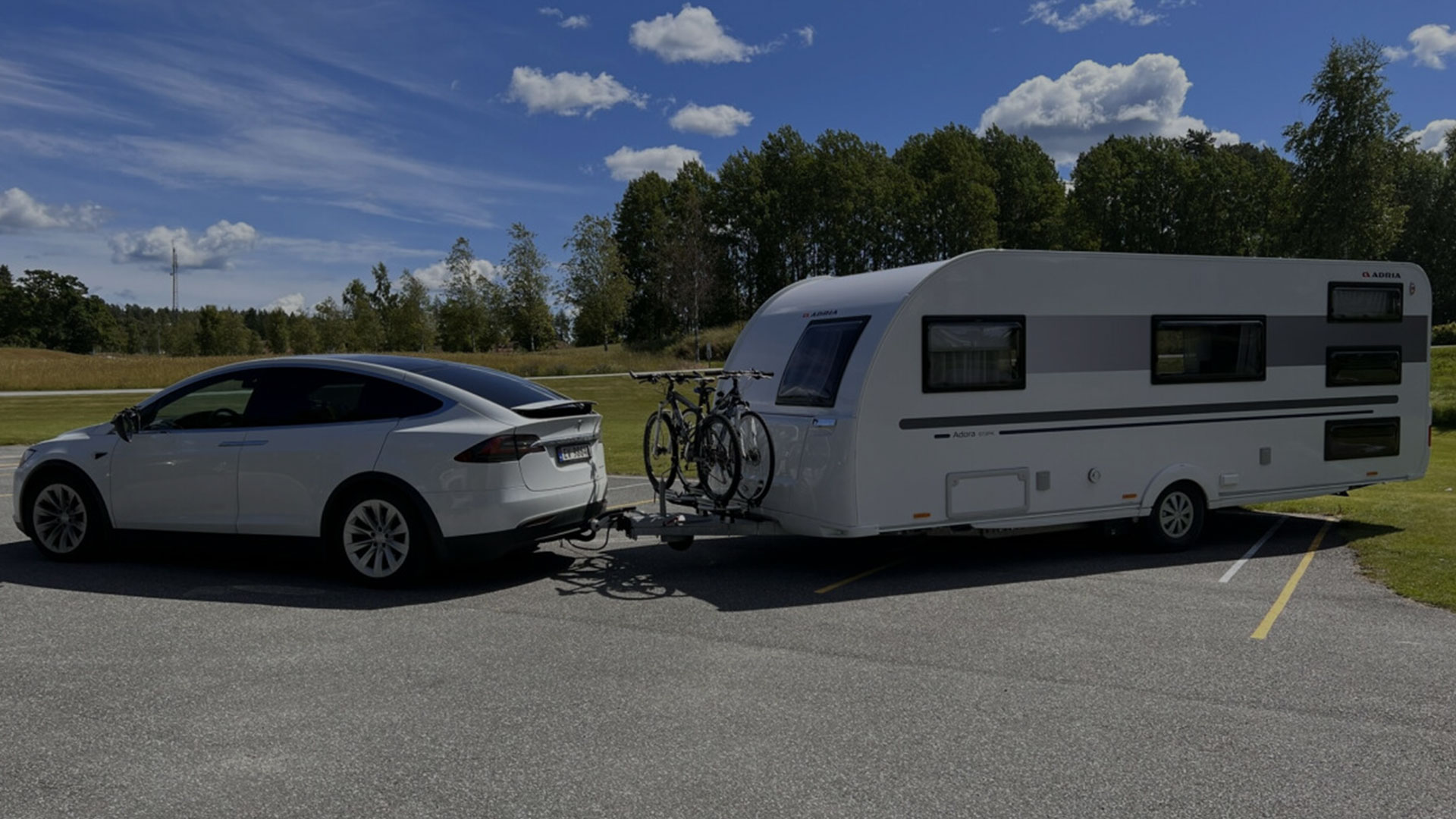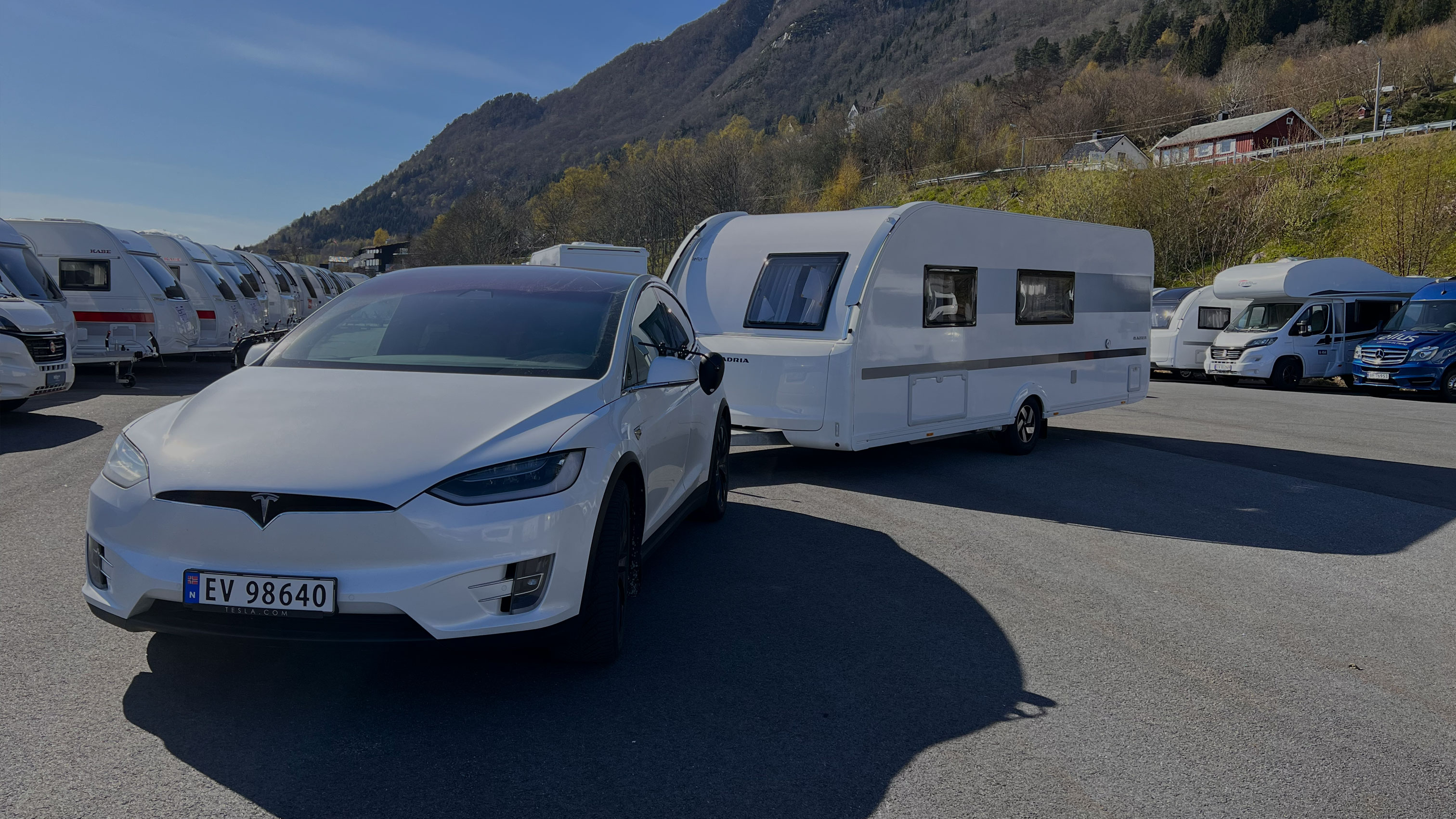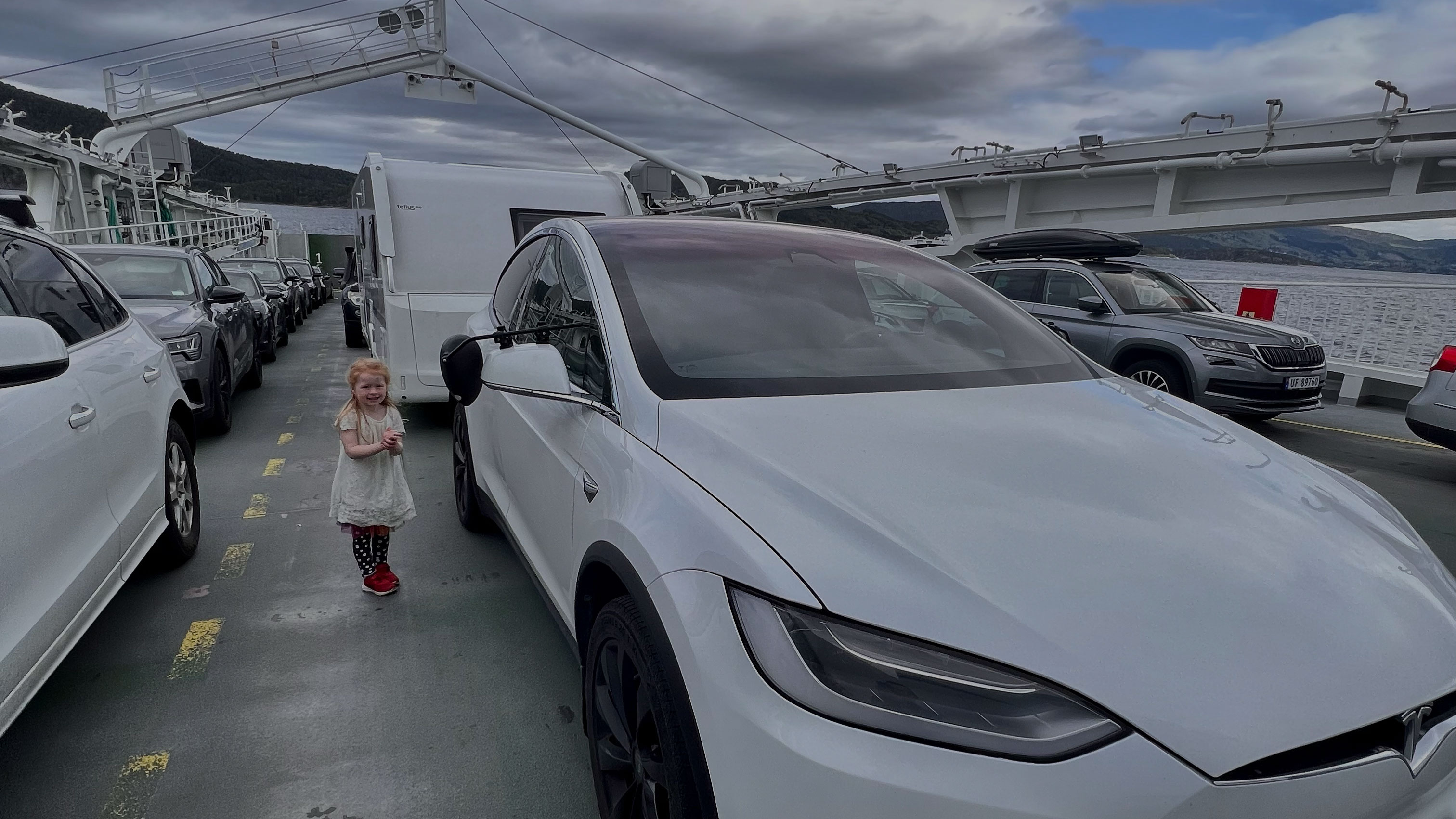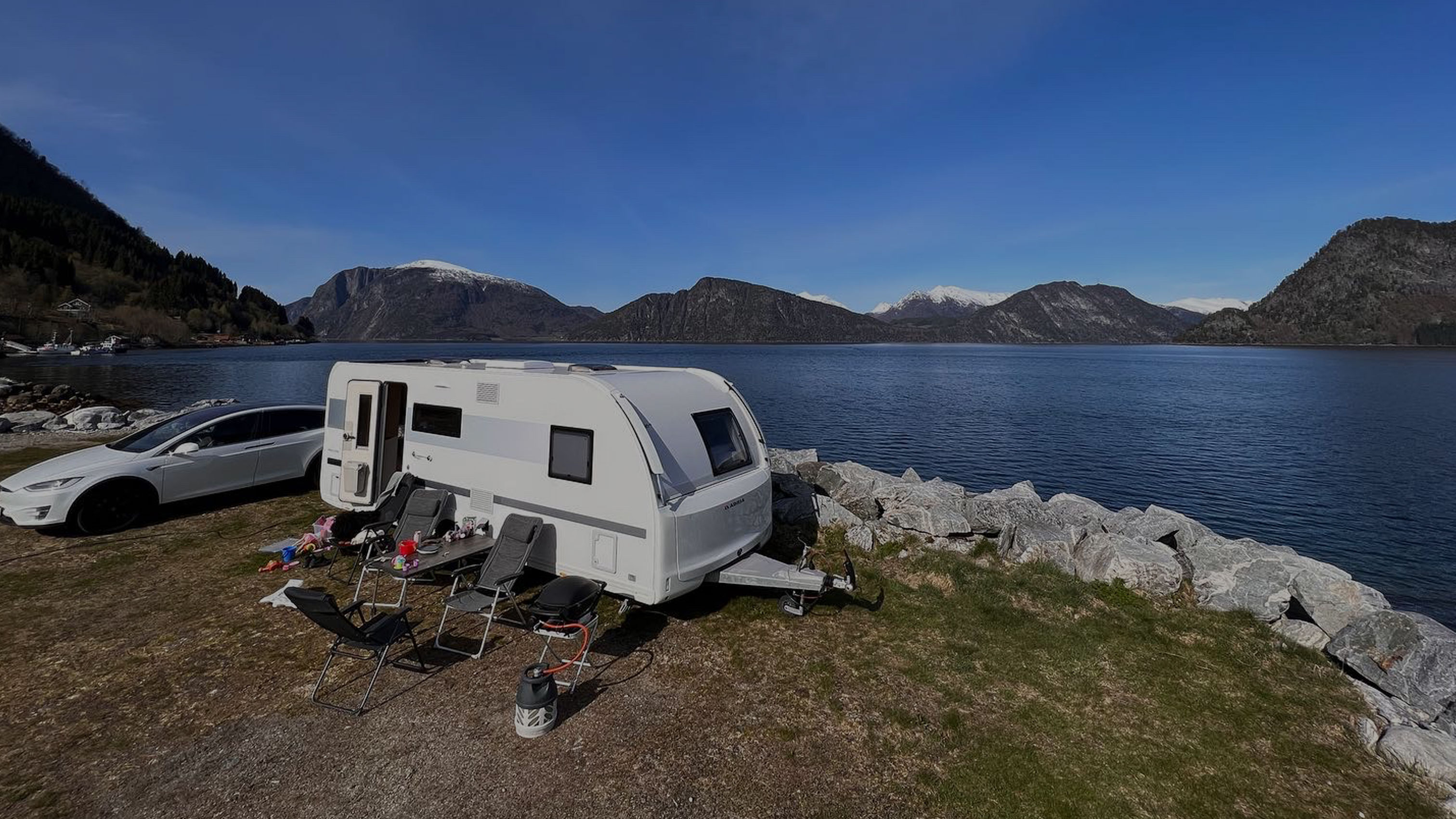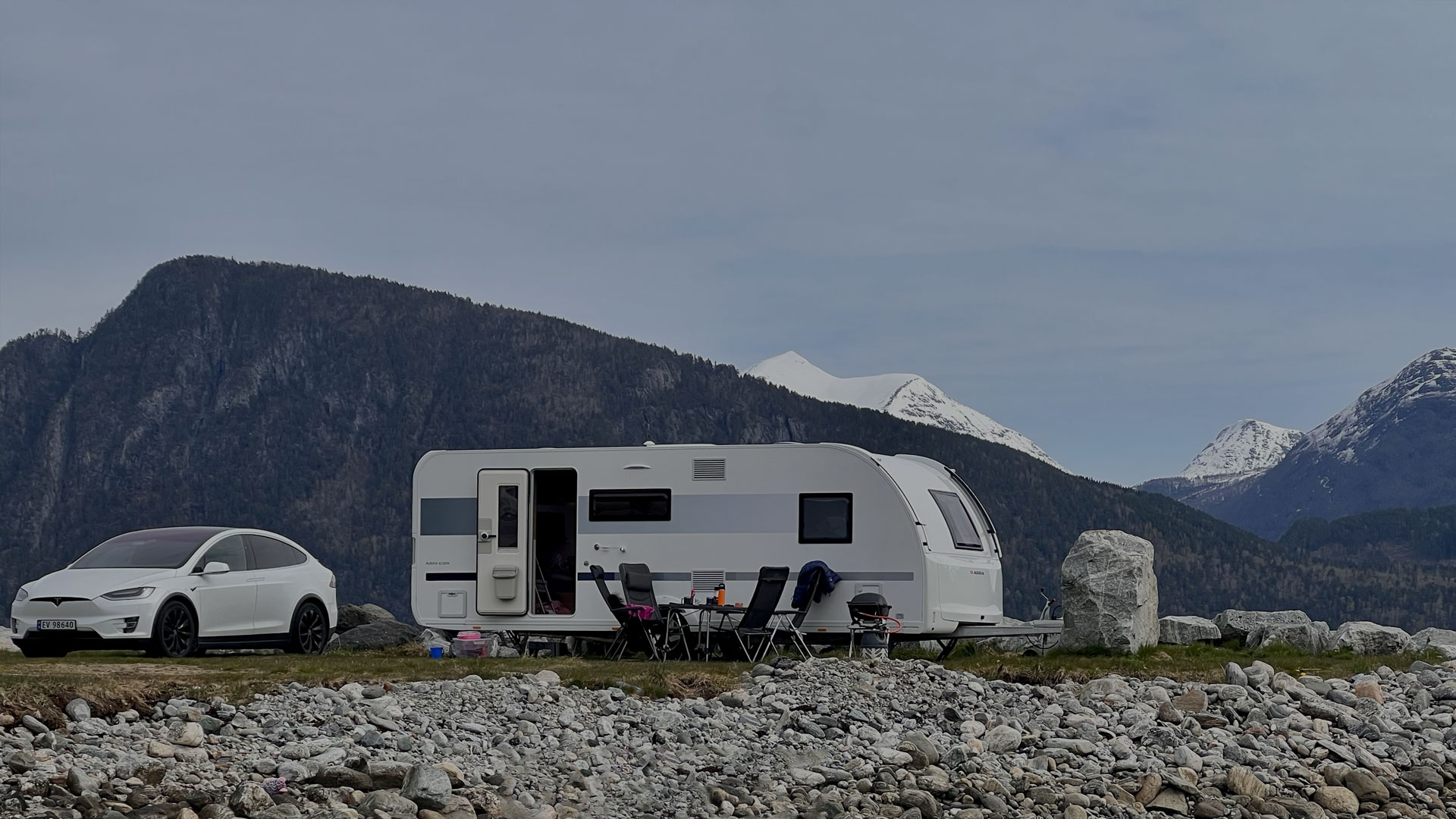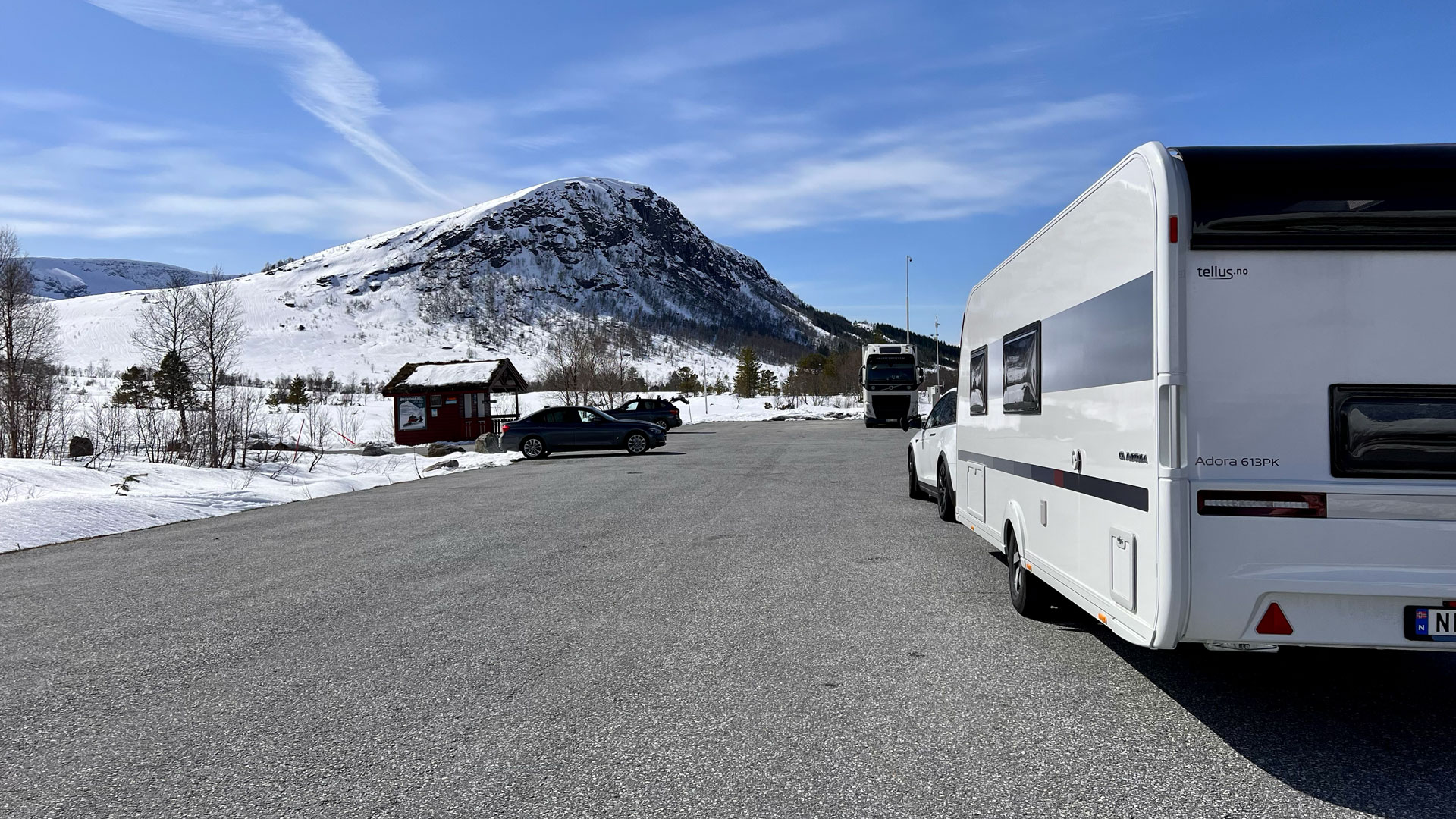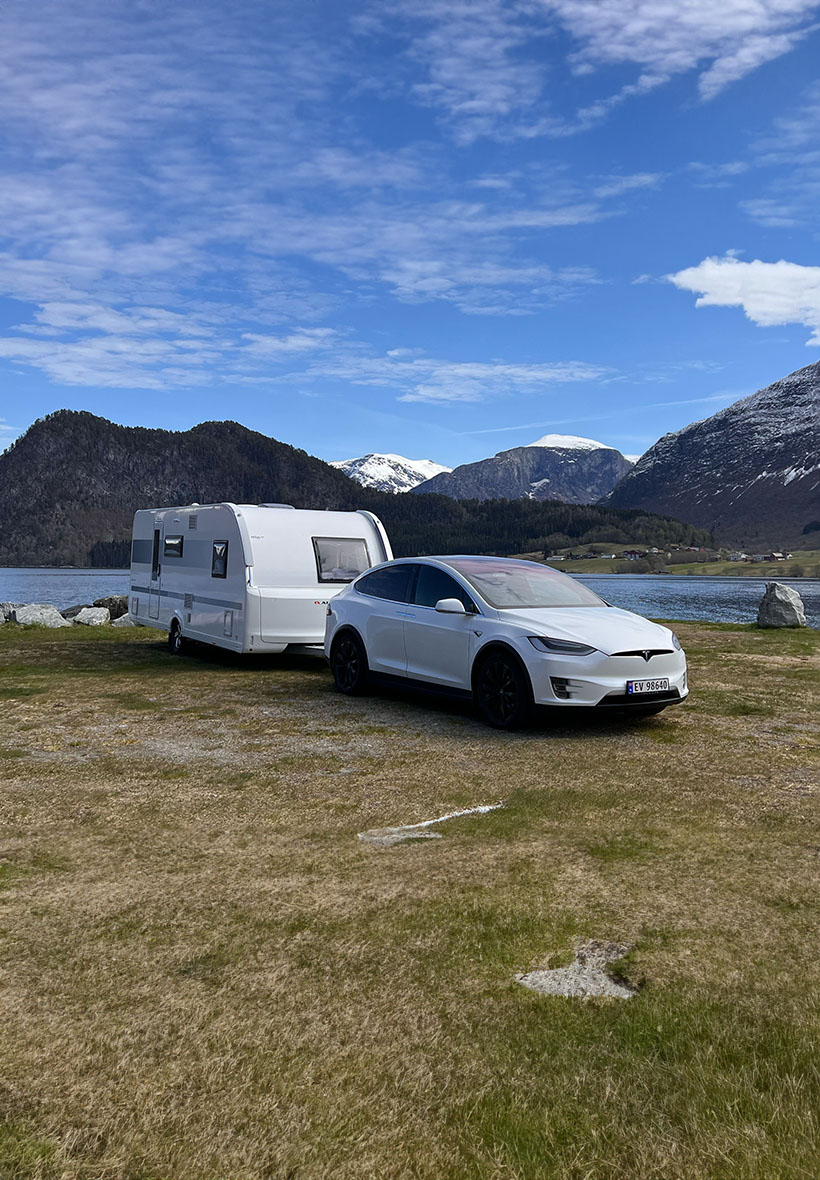
Tesla Model X meets Adora 613 PK
The challenges and benefits of towing with an Electric Vehicle (EV).As experienced campers know, when towing a caravan, there are plenty of factors to consider, from safety and comfort to route planning. Towing with an electric vehicle (EV) instead of an internal combustion engine (ICE) vehicle alleviates some issues and introduces new ones.
As owners of a Tesla Model X and a 2019 Adora 613PK caravan, I share our experiences with an EV as a tow car and provide some tips and insights to help you have a better experience.
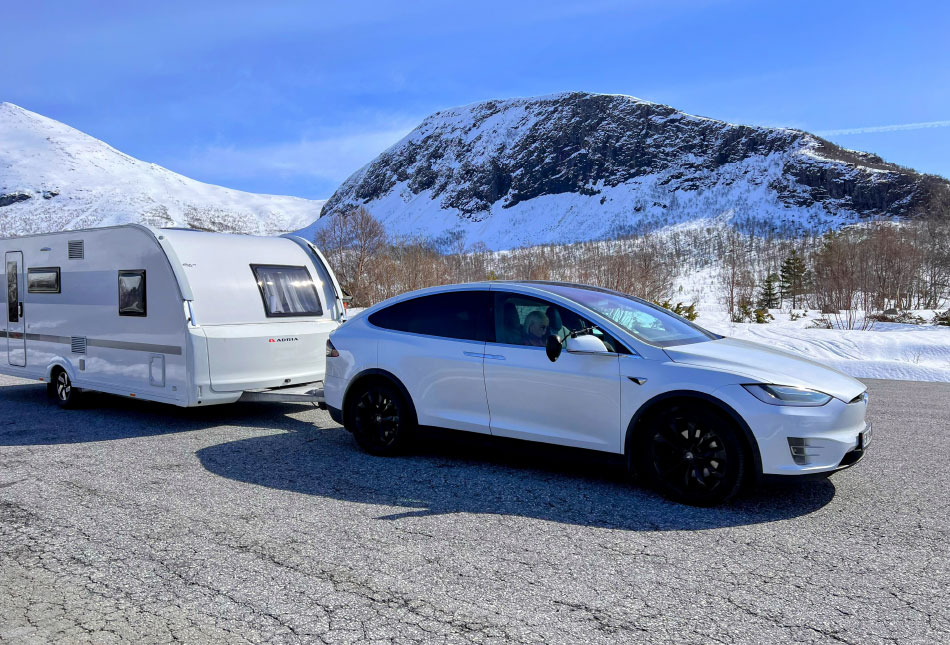
If you are considering towing with an EV, you are likely aware of one major challenge: range.
Before I bought a caravan, I experienced range anxiety first hand driving an EV car, but you soon learn through experience and become as comfortable with range as you are with the size of your petrol tank.
With a "normal" caravan in typical driving conditions, you can expect a range between 100-225km. The exact number will be determined by several factors, notably battery capacity, aerodynamics, and speed.
I drive a Tesla Model X Long Range paired with an Adora 613PK.
I know from experience that on normal motorway driving in at around 80km/h, I will use an average of 380-400Wh/km.
The total capacity of the battery in the car is 103kWh, with a usable capacity of 98kWh.
Dividing consumption by capacity, the maximum range under optimal conditions is 245km from a full to completely empty battery.
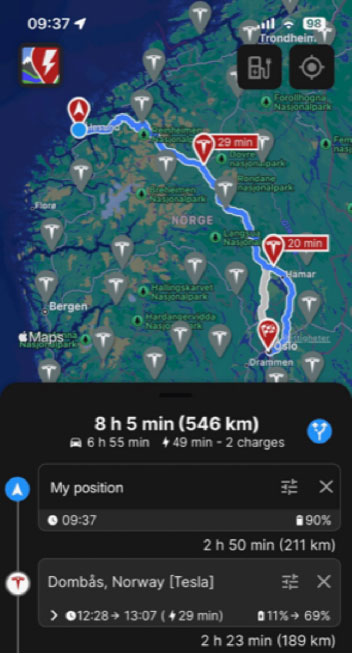
It’s also important to allow for a safety margin, as arriving at a charging station with close to 0% battery left can be a bit to exciting! To put it simply, I get about half the normal range.
There are however a few things that can be done to improve the range and I’ll come back to that later.


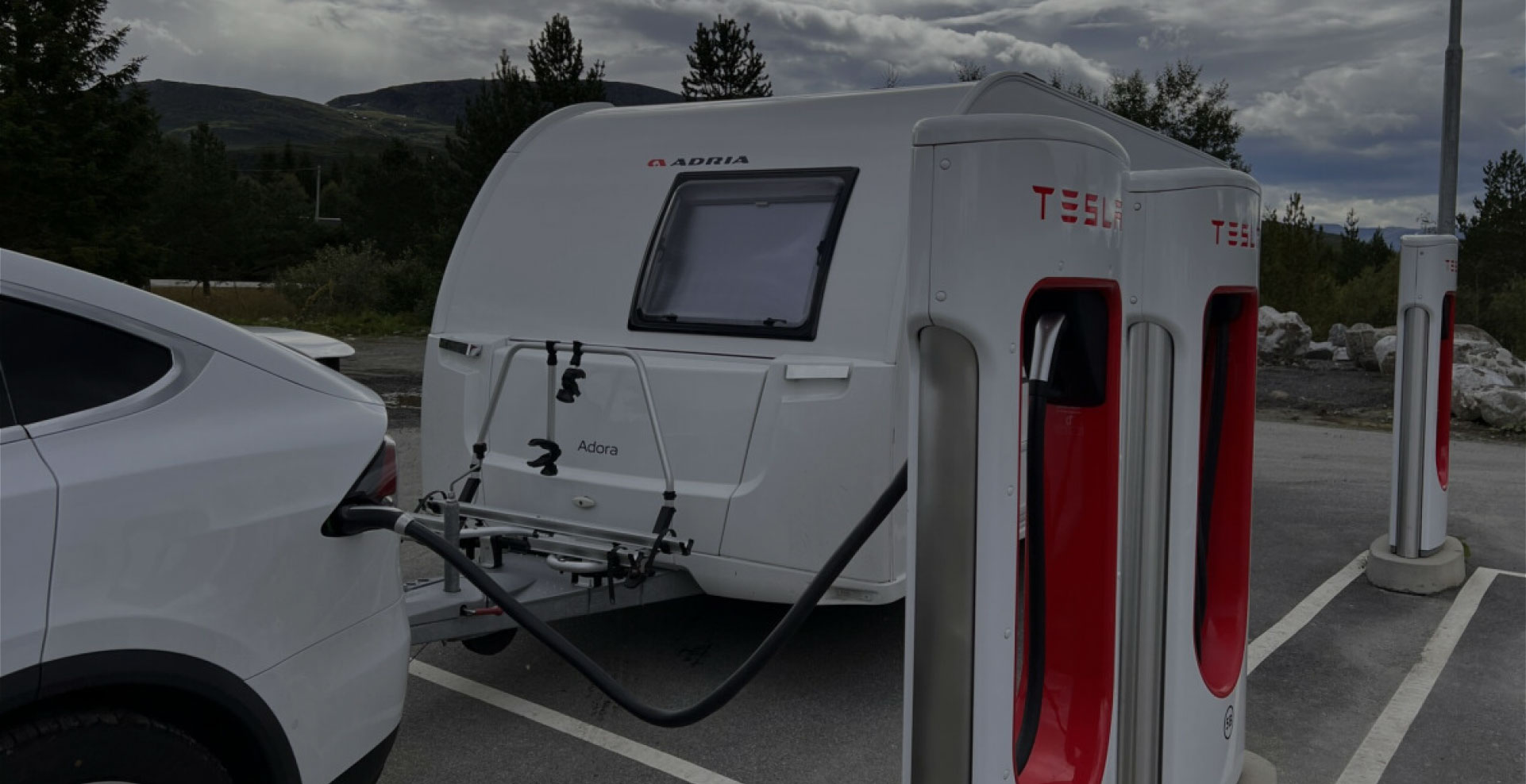
Another issue connected to range is charging time.
Most cars have what we call a “tapering” charging curve, where the charging rate or power is highest at low batter levels and taper off as you get closer to a full battery.

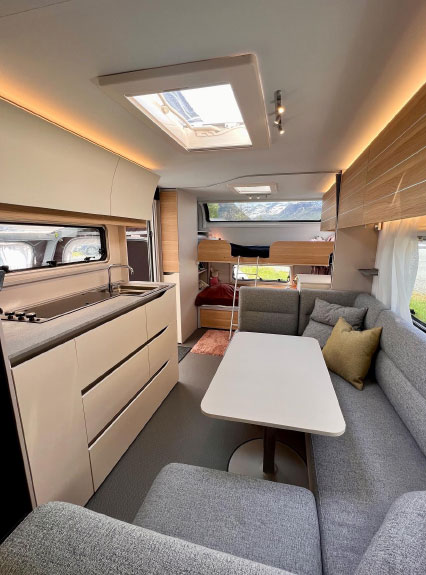
If you are busy eating or doing something else, ok - but it is a pain if you are on a deadline.
That is why most people will only fast charge their cars to about 85%, giving you about 180-200km between charging stops.
On the bright side, in the Adora you'll always have a comfortable place to stay while charging, and a bathroom!
A common question we hear is,
"What do you do with the caravan when you're charging?Isn't it a lot of work to unhitch it?".
Firstly, we only unhitch about 50% of the time we charge. Many chargers have a few stalls where it's possible to park parallel to the charger, so no need to unhitch. When parallel parking isn't feasible, we have always been able to find an open space nearby. With practice, unhitching takes less than a minute and you’re ready to charge.
Be aware that charging rate and curve will be different between car models, as well as battery capacity.
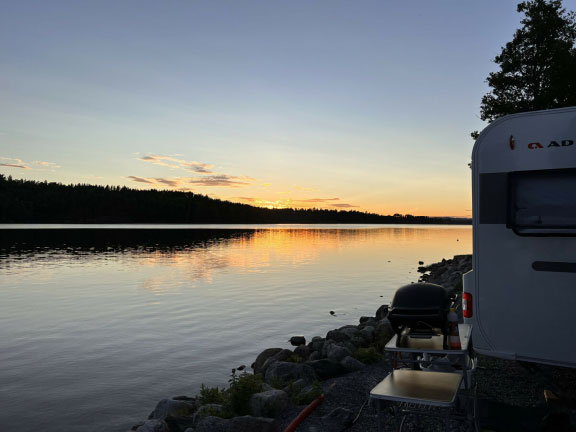
Towing a caravan with an electric vehicle offers severalbenefits beyond the environmental (and the future is electric!).
EVs tend to have a long wheelbase, high weight, and a low center of gravity, which significantly improves stability when towing.
This does not eliminate the need for proper weight distribution, but it makes the caravan less “jumpy”.
Trailer sway control in the car is another important feature, where the ESP system of the car recognize that it’s towing and works to eliminate sway. This however isn’t exclusive to electric vehicles.
Most cars on the market today are not designed for towing.
They usually have downsized engines to improve fuel economy and reduce emissions. In contrast, EVs are designed to provide high and seamless torque, making towing uphill a breeze.
‘’With an EV, you can enjoy a powerful and efficient towing experience without worrying about having enough power’’.
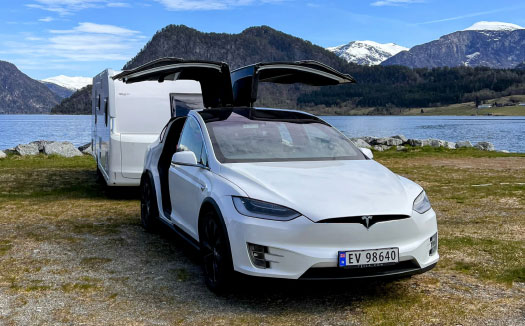
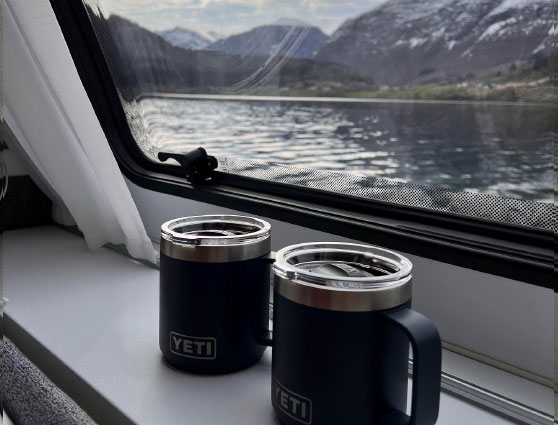
If you are into wild camping, you will love the V2L feature offered by many EVs.
This feature lets you use your car's battery as a giant power bank. The power available in most EV batteries means that you can comfortably camp the whole weekend without an external power source.
With V2L, you can power up your camping equipment or caravan appliances, making your camping experience easier.
For many campers, the allure of camping is getting closer to nature and living a simpler life. Towing a caravan with an EV contributes to creating a more sustainable environment by reducing tailpipe emissions. This adds an extra layer of satisfaction to the camping experience, making you feel like you're doing your part.
Towing a caravan with an EV offers several benefits, so if you're planning on changing your car soon, towing a caravan shouldn’t stop you from getting an EV!
In addition, it can make it easier to wild camp (where it is allowed) with the possibility to share power from your car to the camper.
Norwegian Chris Gati has been driving an EV since 2015 and with a caravan since 2019. He's just taken delivery of a new generation Adora and will be updating us with his next EV adventures soon.

